San Sebastian is a region of northeastern Spain which has a unique Basque culture and language quite separate from Spain. It’s a matter of debate but I had the good fortune to have lunch there next to a friendly group of Spaniards, one from San Sebastian, one from Barcelona, and one from Madrid. And it became clear from the constant good-natured ribbing that the guy from Madrid, a true Spaniard, was outnumbered. And that both San Sebastian (Basque) and Barcelona (Catalonia) have maintained their sense of independence. In fact, the Basque language is non-Germanic and is not related to any other known language.
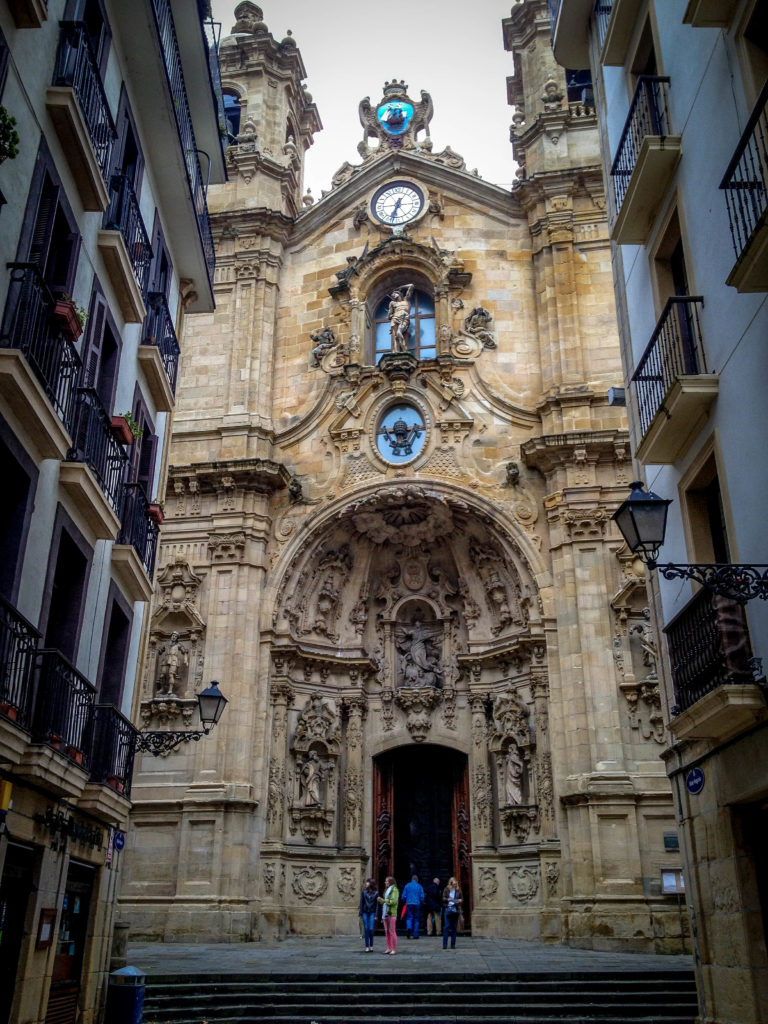
Iglesia de San Vicente, a 16th century gothic church tucked cozily into the sidestreets of the old district (Parte Vieja).
San Sebastian is also known for their obsession with great food, having the most Michelin stars per capita in Europe and only second to Kyoto in the world. Months before I had arranged reservations at Arzak (3 Michelin stars). Read here for that experience. But aside from amazing restaurants, the food scene, even in a pedestrian sense, is plateaus above an average city. Every night it seems like the whole town is out moving from spot to spot, sampling each location’s best dish, then moving on. These small bites are called Pintxos here which is roughly equivalent to the Spanish tapas. Each bar counter is loaded with plate after plate of tasty treats. You walk in, grab some snacks, and the bar tender tallies you up on your way out. With stellar ingredients and a relentlessly high standard you would be hard pressed to find something bad at any random place you walk in. Although there are stand-outs. And I could get lost here for months trying to figure them all out.
The day we arrived the city was shut down in unity of a protest. The crowds were gone as we arrived in the last moments of dusk but the evidence of a something very radical were all around. Fast food joints and banks had been spray painted over. Signs still hung lifeless in the cool ocean breeze. And when I say the city was shut down, I mean every store, restaurant, and gas station. I had never seen such solidarity across a city, which really impressed me. But not so much a good thing if you’re a starving traveler looking for a quick dinner before bed.
The men here have a long tradition of food societies where men gather, cook, and drink together, a social club of sorts. Allow me to stereotype but there’s a very Chicago kind of look to the men. Thick moustaches and a no nonsense but casual demeanor.
Traditional San Sebastian Food
Bocalao
As with many regions in this area, salted cod or bacalao (or bacalhau) is a very important foundation to the Basque cuisine. Cod is salted and dried which keeps for a very long time and when rehydrated can be made into a variety of cod dishes. This simple dish of bacalao with a hand shaken emulsion and potatoes is a foundational Basque dish.
Jamón Ibérico de Bellota
Ok, so this ham … this is sex on a plate. You just want to rub it on your face and do naughty things to it. It’s hard for me to even call it ham in the sense that I grew up with “ham”. I’ve had great prosciutto, great iberico and serrano ham, but this was so much better. The hand picked iberico black footed pigs that are selected to roam the Spanish pastures and fattened on acorns (bellotas) are imparted with a marbling and sweet yellow fat that is unrivaled. I don’t think I’m the first person to fantasize about smuggling a whole ham back to the US, black foot still attached, but it’s illegal to import. Which makes the ham shops at the airport that much more depressing.
The display of these ham trophies is a bit like a dick measuring contest between local bars. Each bar seems to have an inordinate amount of them hanging from the ceiling in mass just as you walk in the door (with little plastic cones attached). When one is being actively carved it’s fitted into this special contraption that clamps to the ankle and holds the leg for easy cutting.
Pintxos
Perhaps San Sebastian is most famous for pintxos, a style of eating with small bites, little snacks on toothpicks, little sandwiches, and small plates. The old part of town (Parte Vieja) is pedestrian-only and the streets are lined with such bars. Inside, the bar tops are stacked with premade plates of food which are handy for a quick bite but each bar typically offers a menu of made to order items. The locals say that that’s the best food and each spot has a special dish that the locals all know even if it’s not advertised. And dinner becomes a social activity, moving from here to there to meet friends and have a few glasses of cider which is very popular. The tradition is to pour the cider from a height to the glass so cider spouts on bars often look like arms held aloft which shoot a stream of cider behind the bar that is caught in a glass.
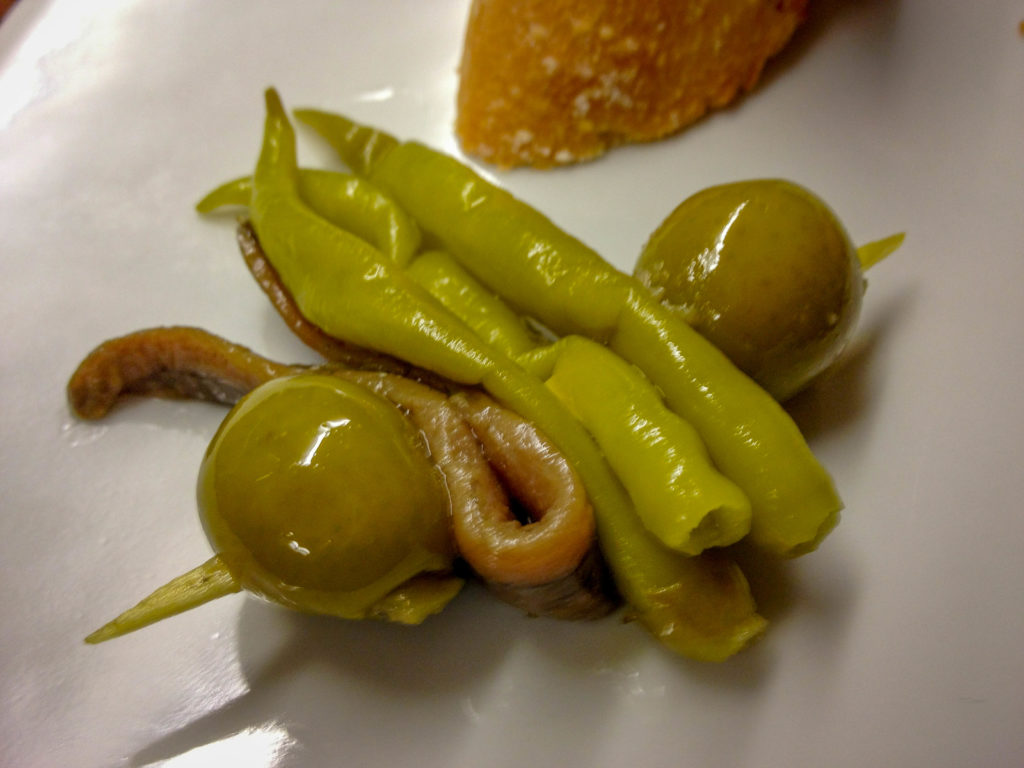
This is supposed to be the original pintxo. A sardine sandwiched between 3 peppers and two olives on a toothpick. Terrific!
I recall eating in a pintxos bar on one of our first days. My Spanish is minimal at best but we stumbled through ordering with the bartender who spoke a bit of English. But midway through our meal he left shift and was replaced by another bartender who spoke no English. When we were finished we attempted to pay but couldn’t communicate what we needed. We struggled through the words we knew but did not know the word for the bill or check. Beside us at the bar was a very sophisticated looking french man having a deep conversation with his friend. After watching us struggle for some time he turned very smoothly and in a deep suave voice says, “It’s la cuenta.” holding his cigarette out in a very elegant way and then without missing a beat smoothly turns back and continues his conversation. Perfect.
We asked for la cuenta and we were on our way. That’s a good word to add to your vocabulary if you haven’t already.


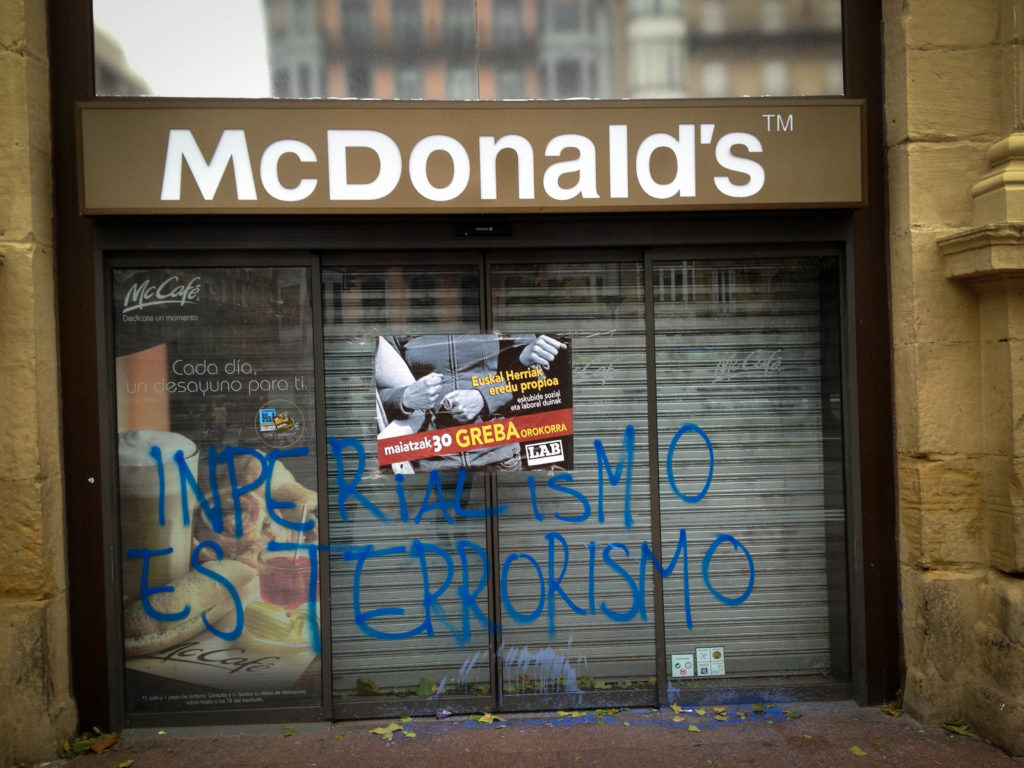
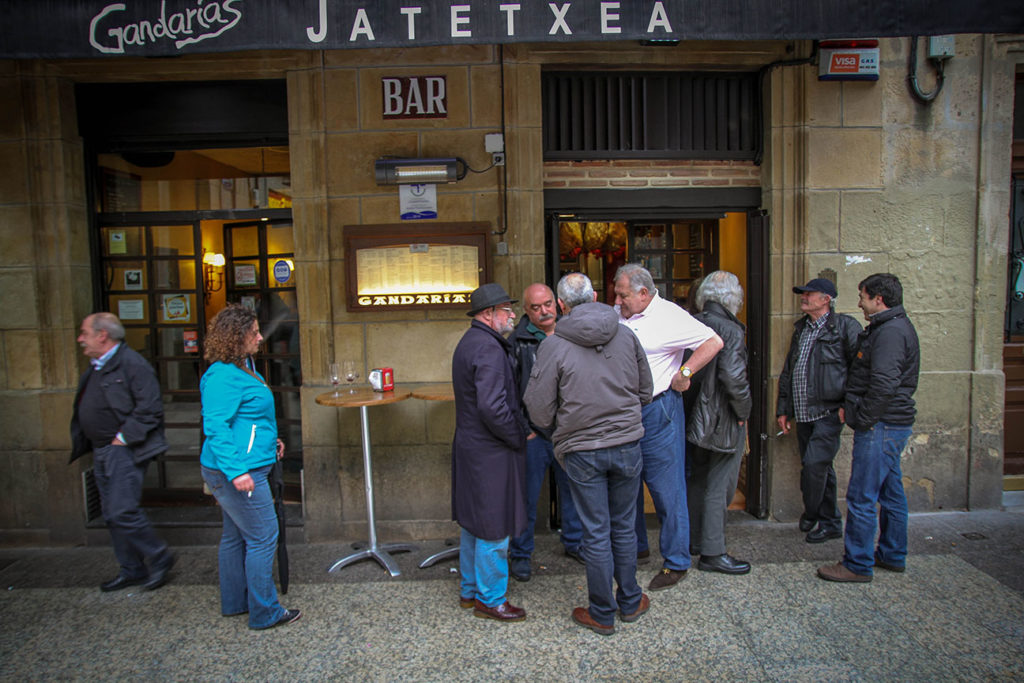
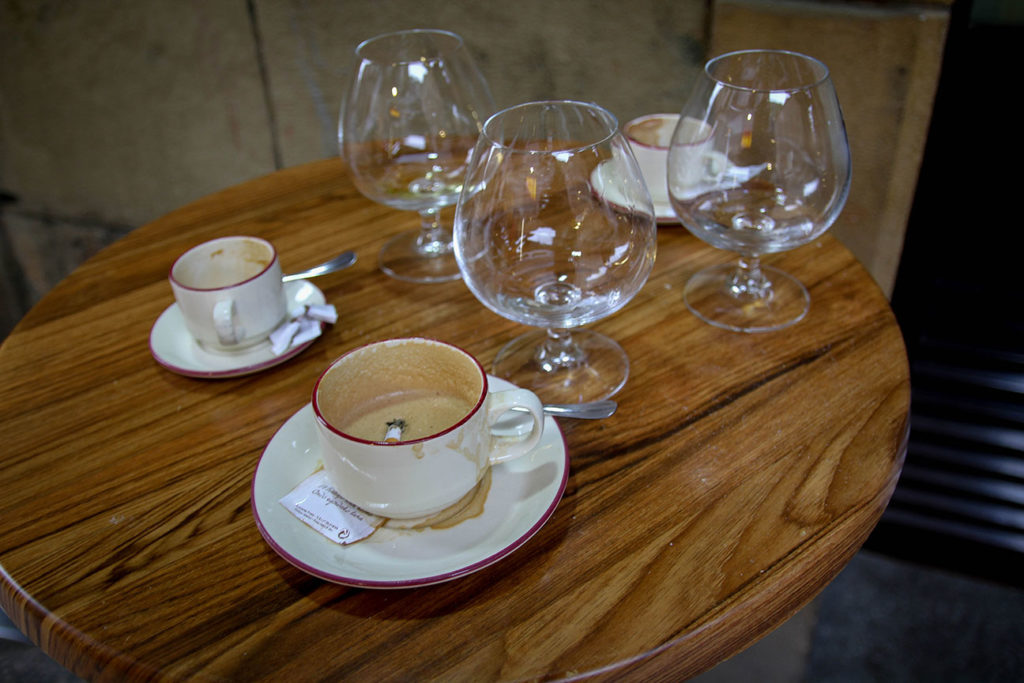
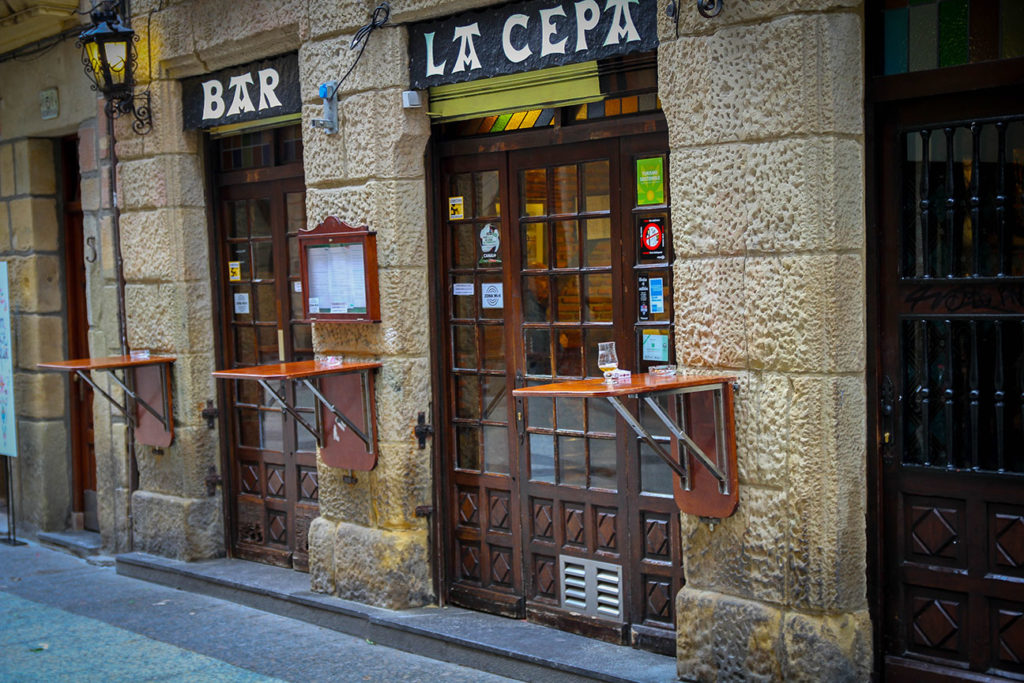

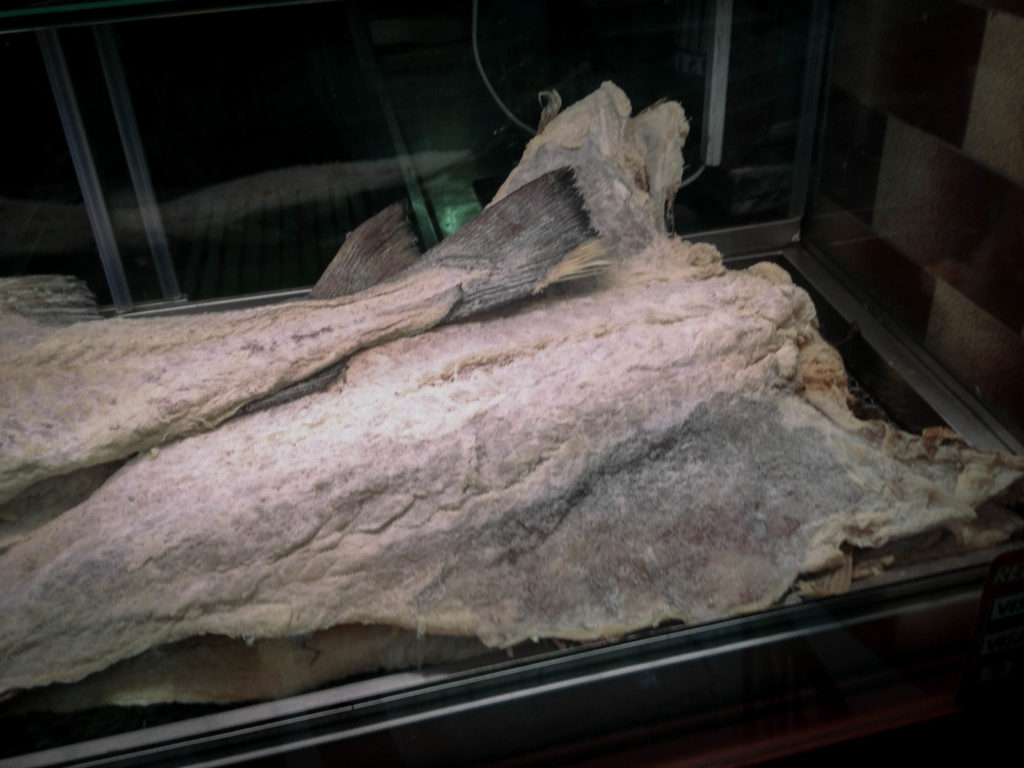
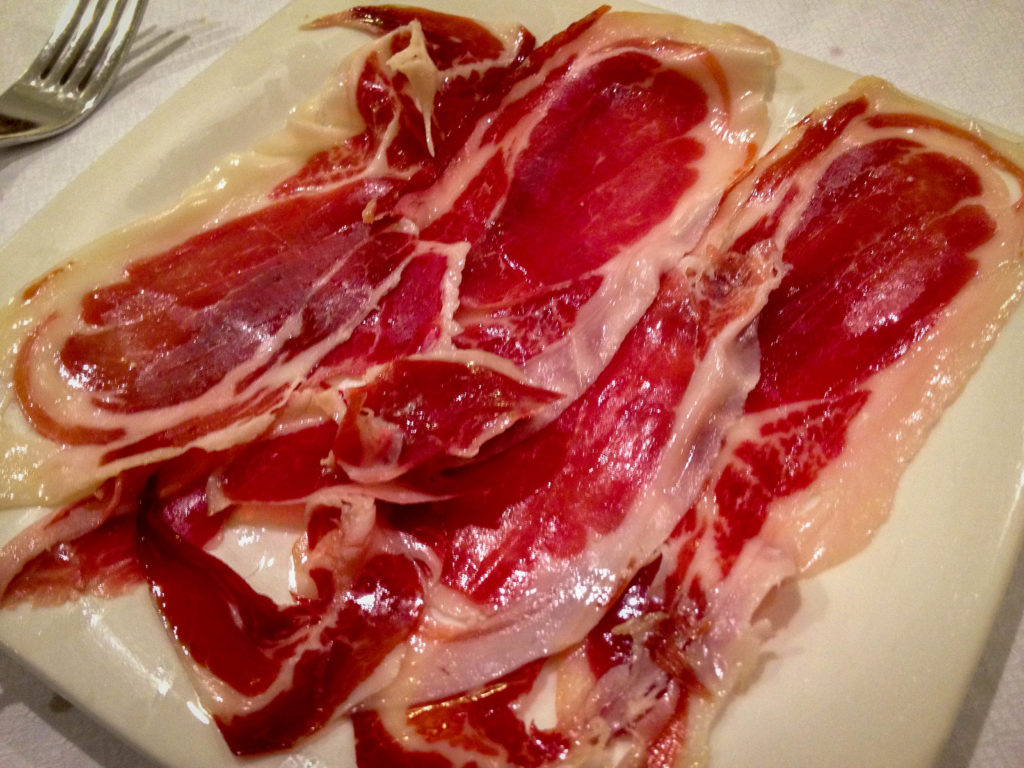
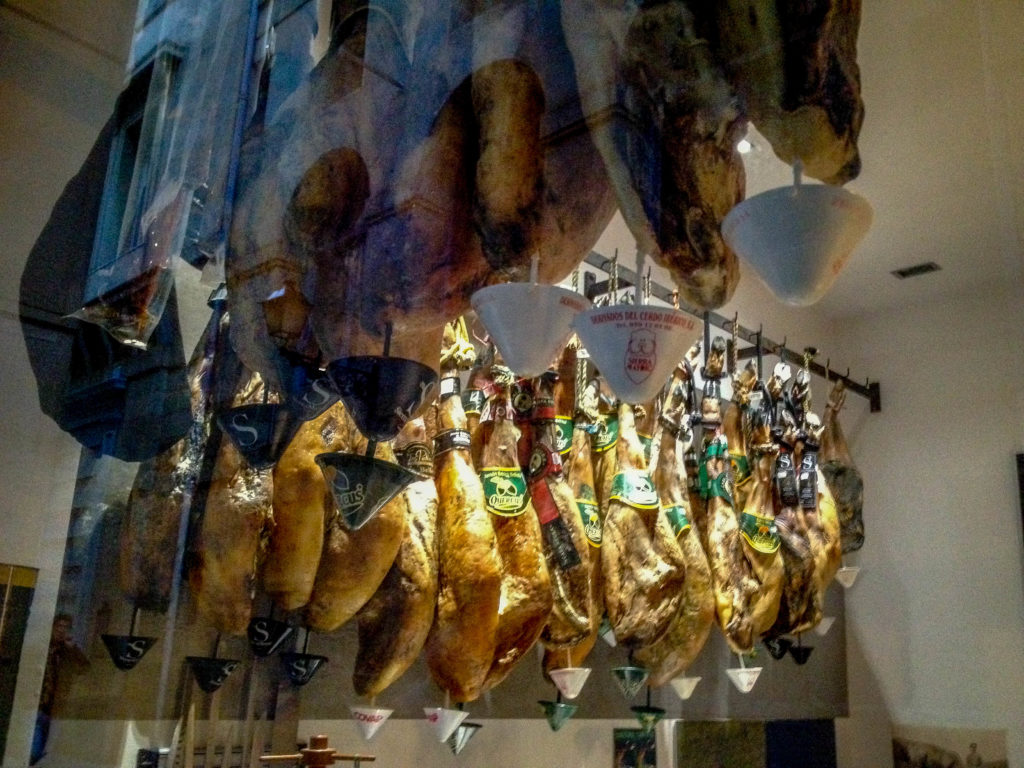
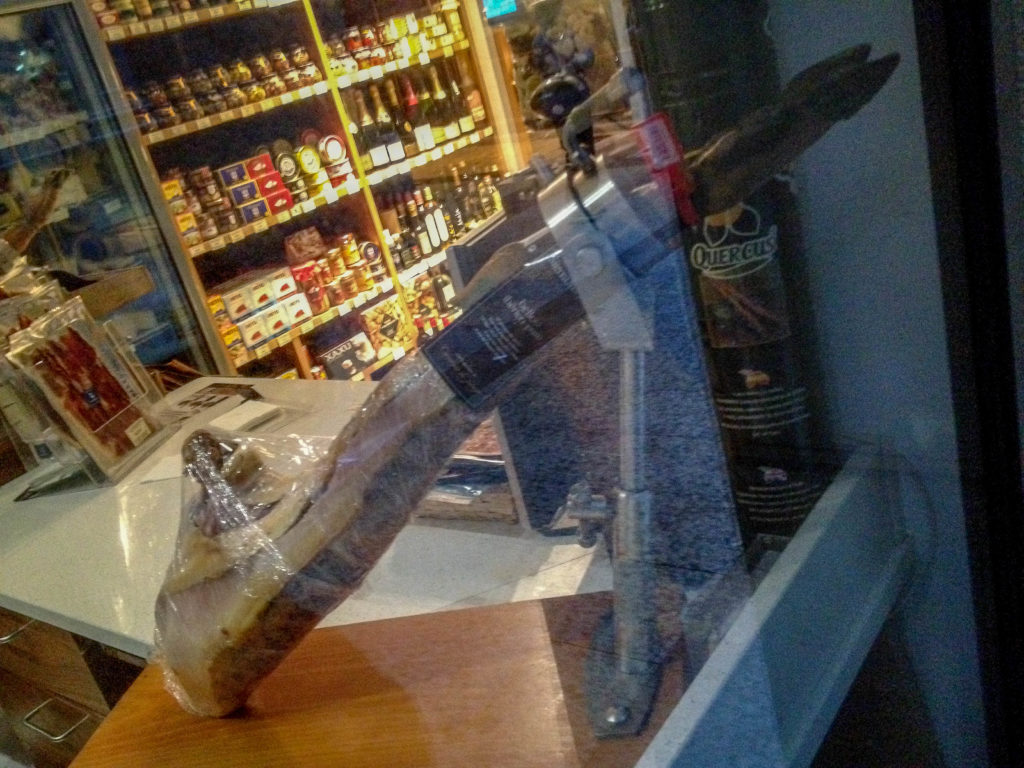
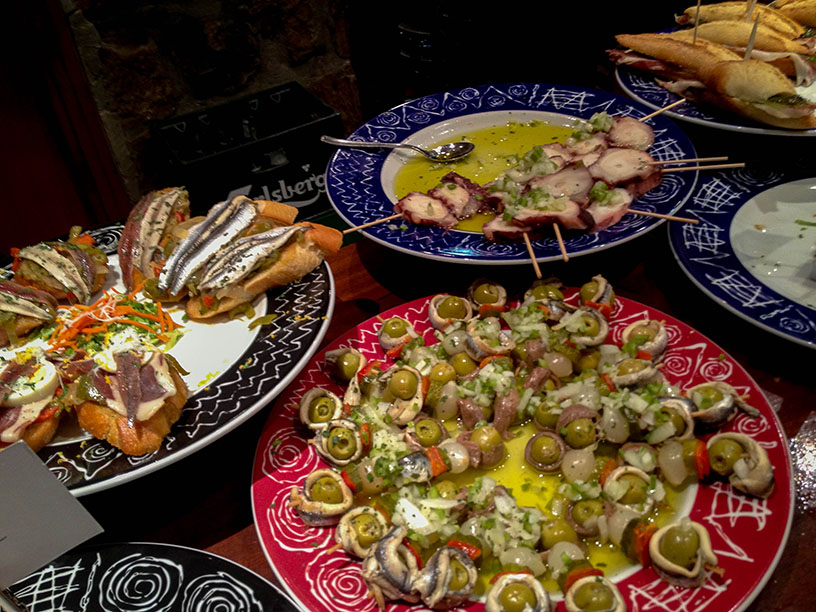
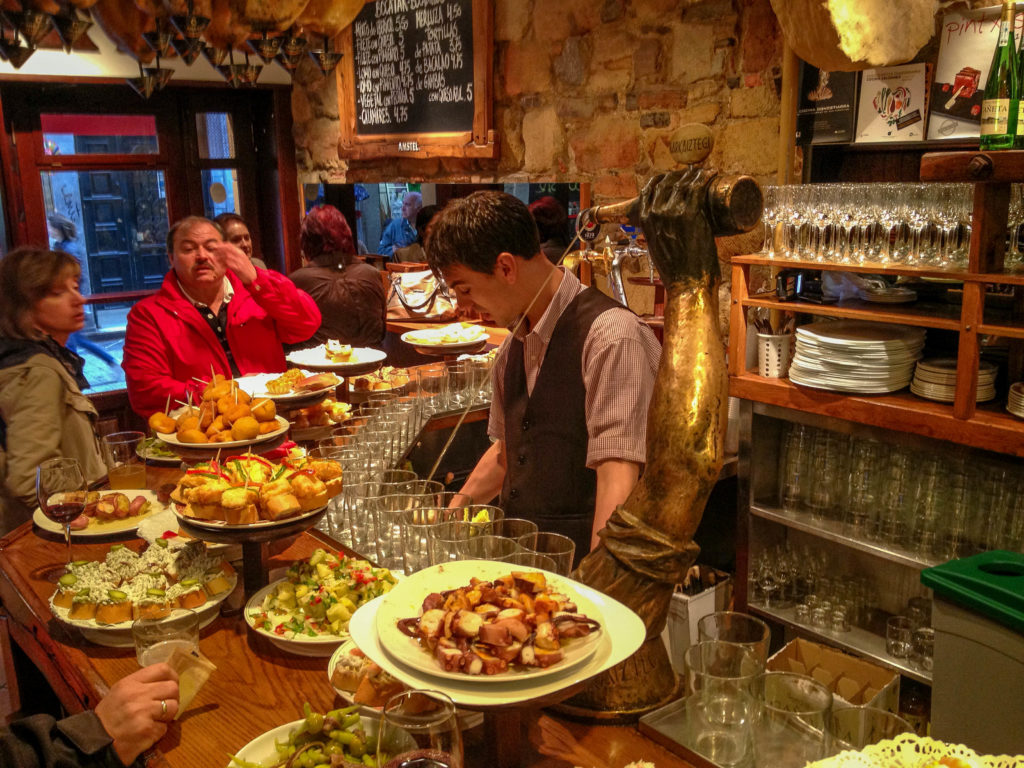
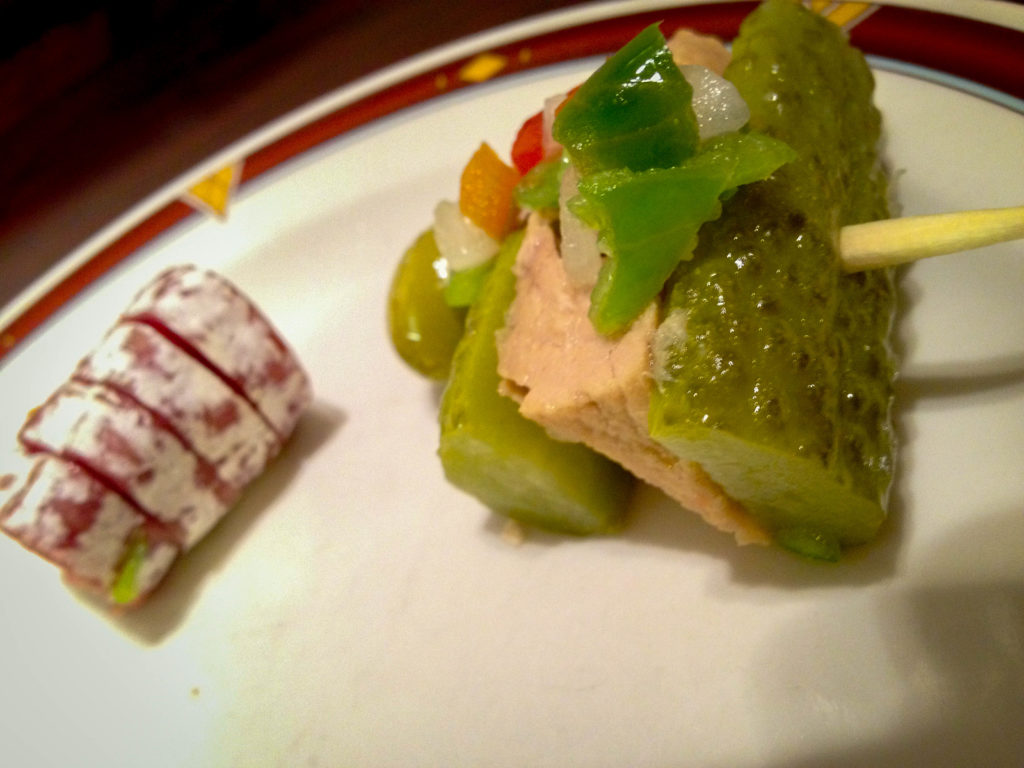
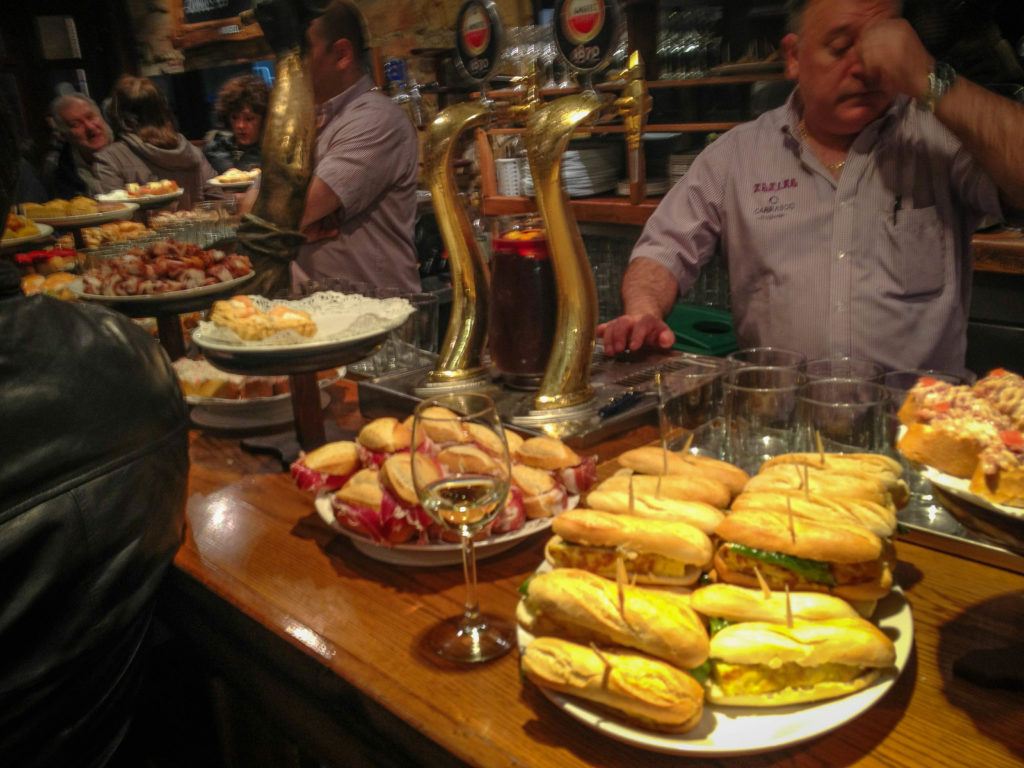

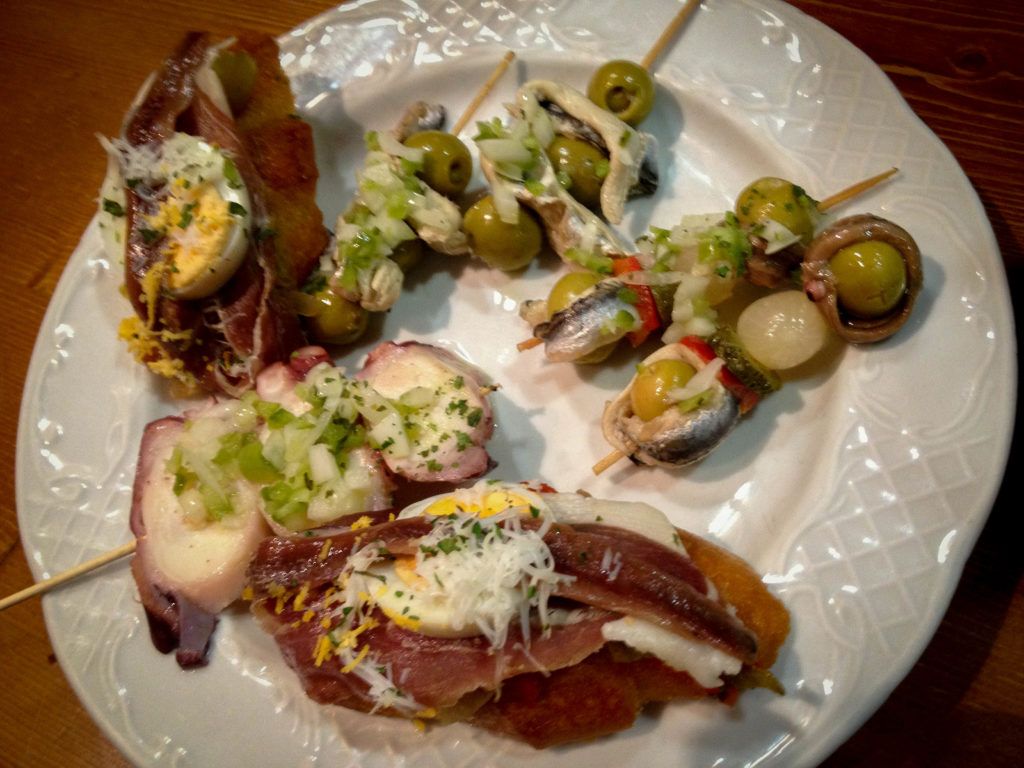
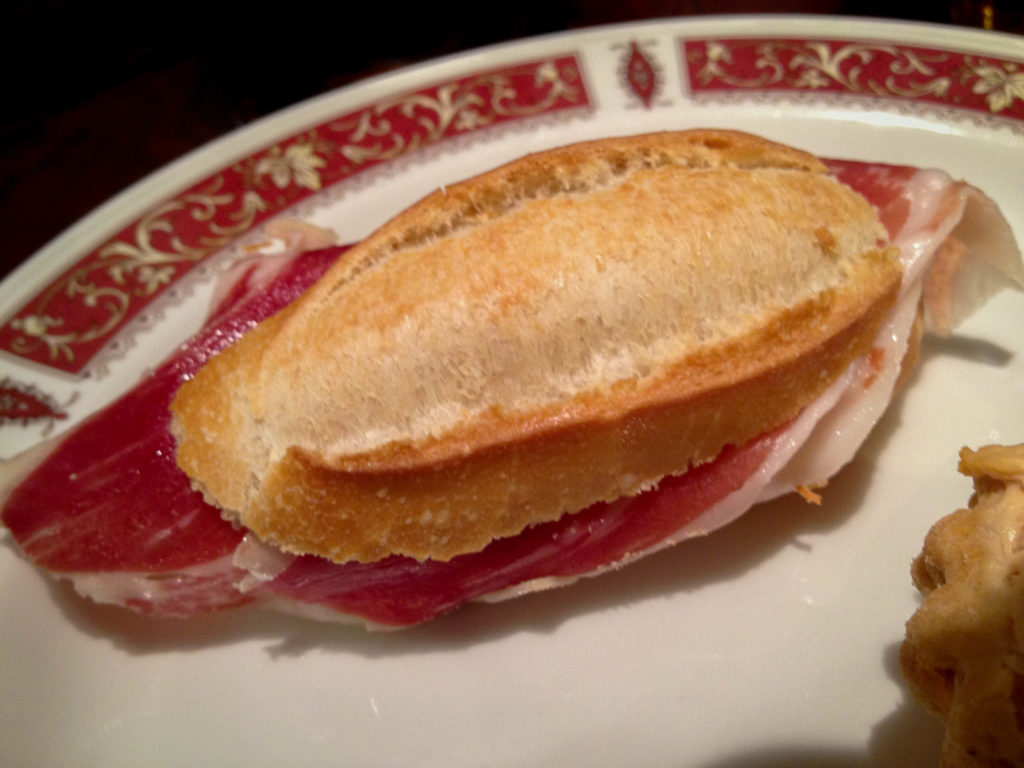
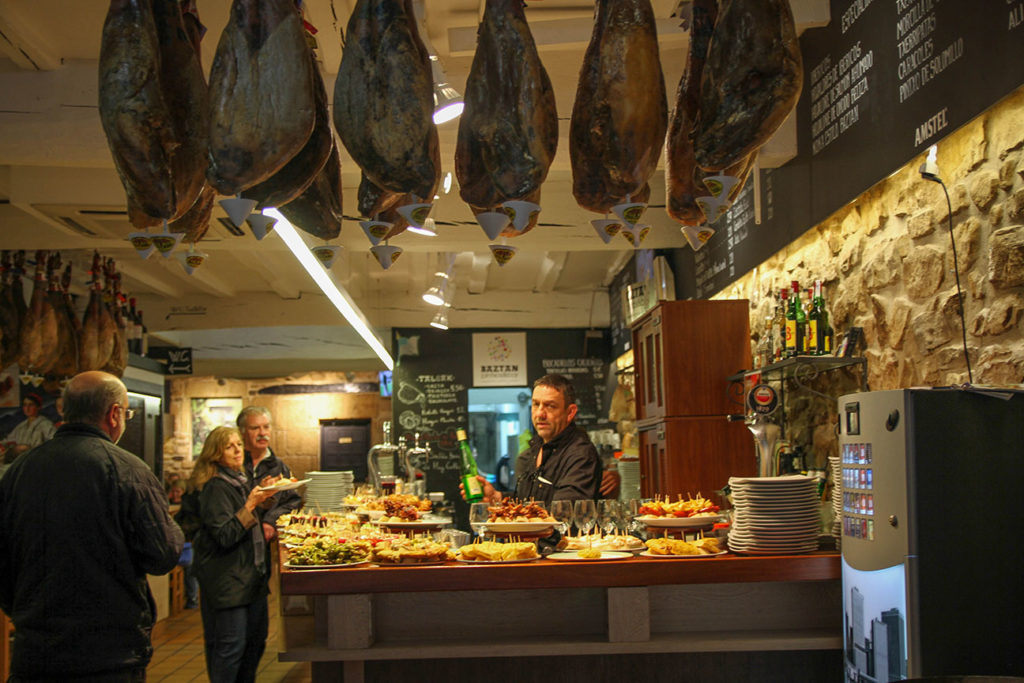
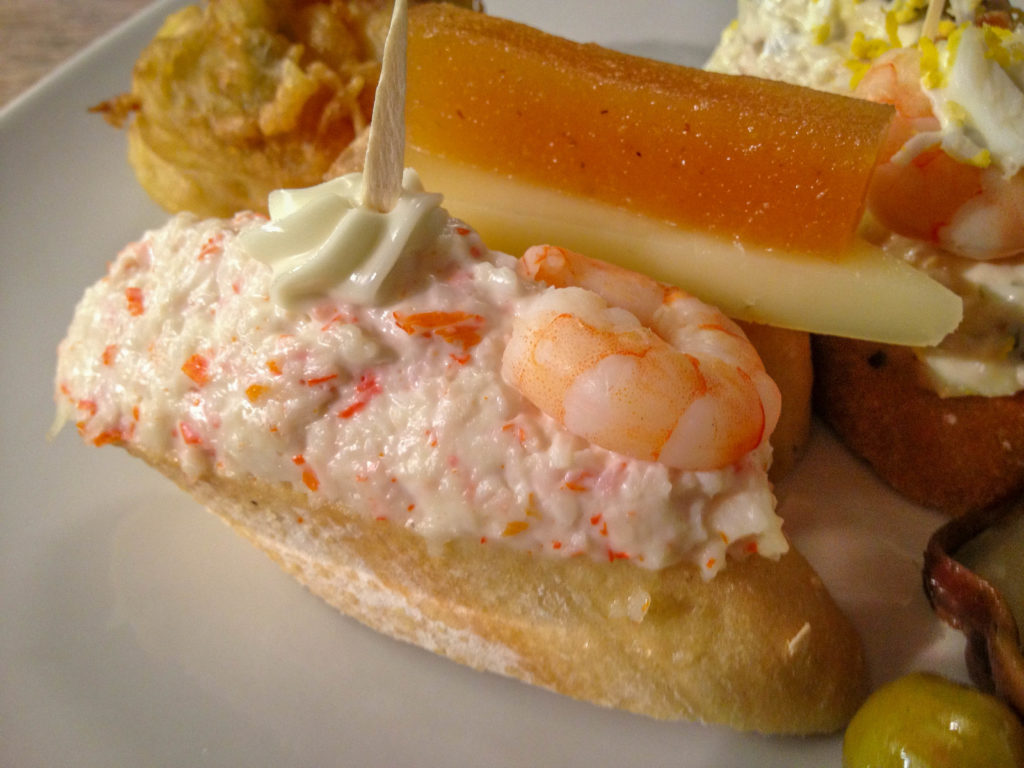
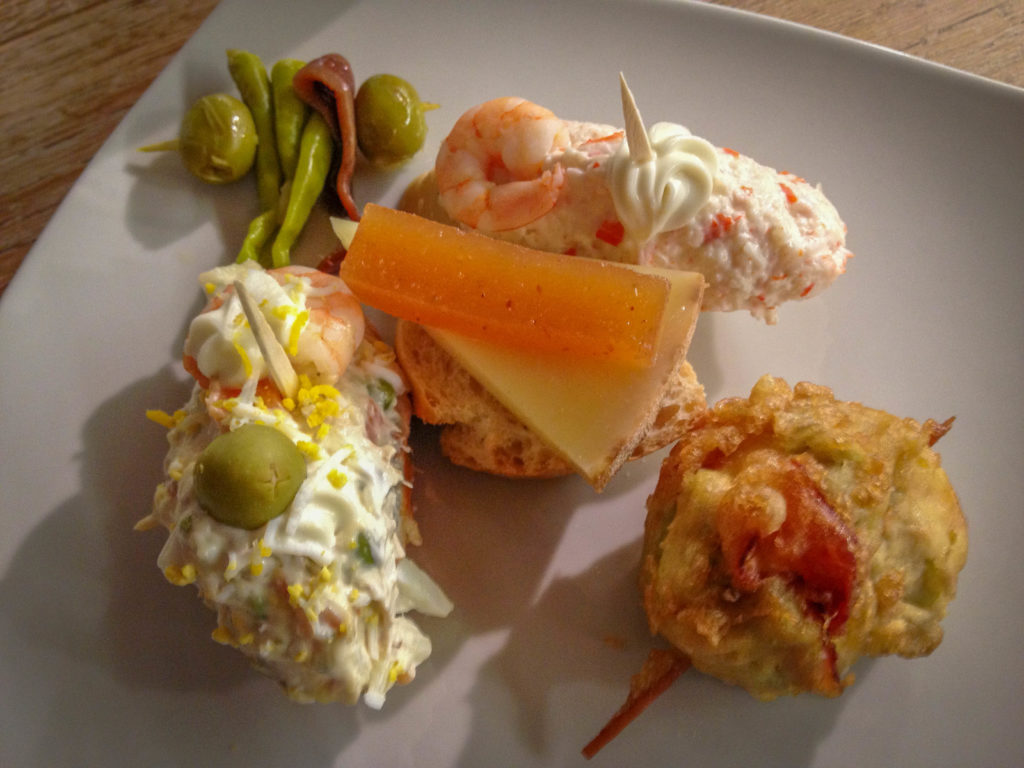
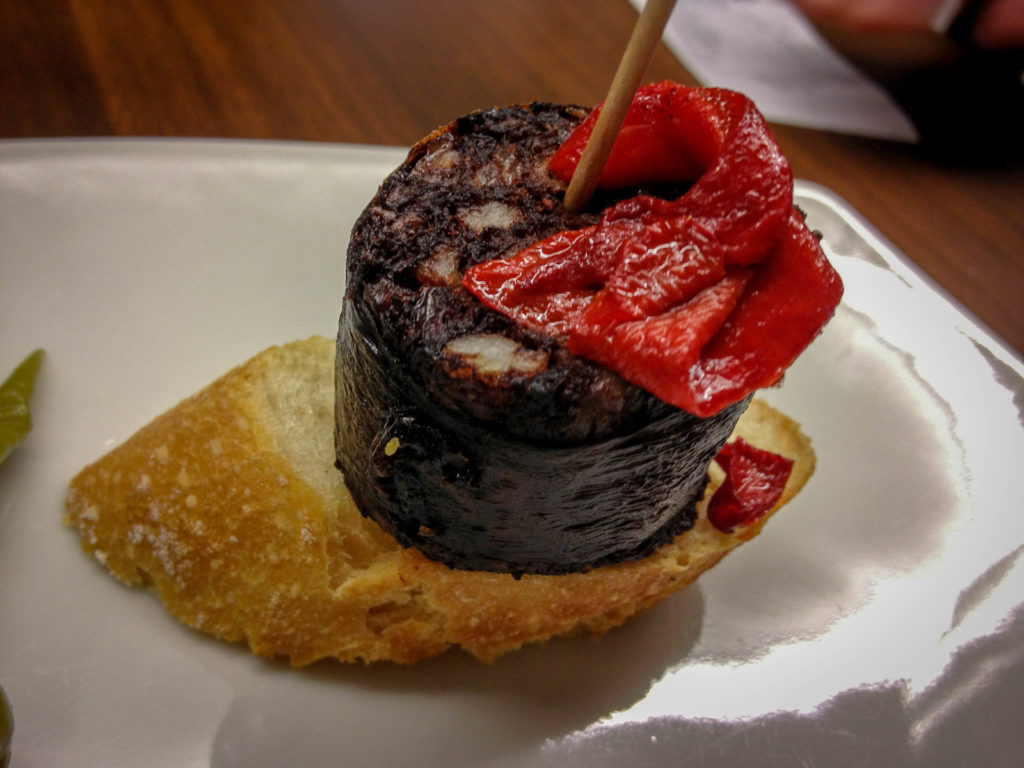
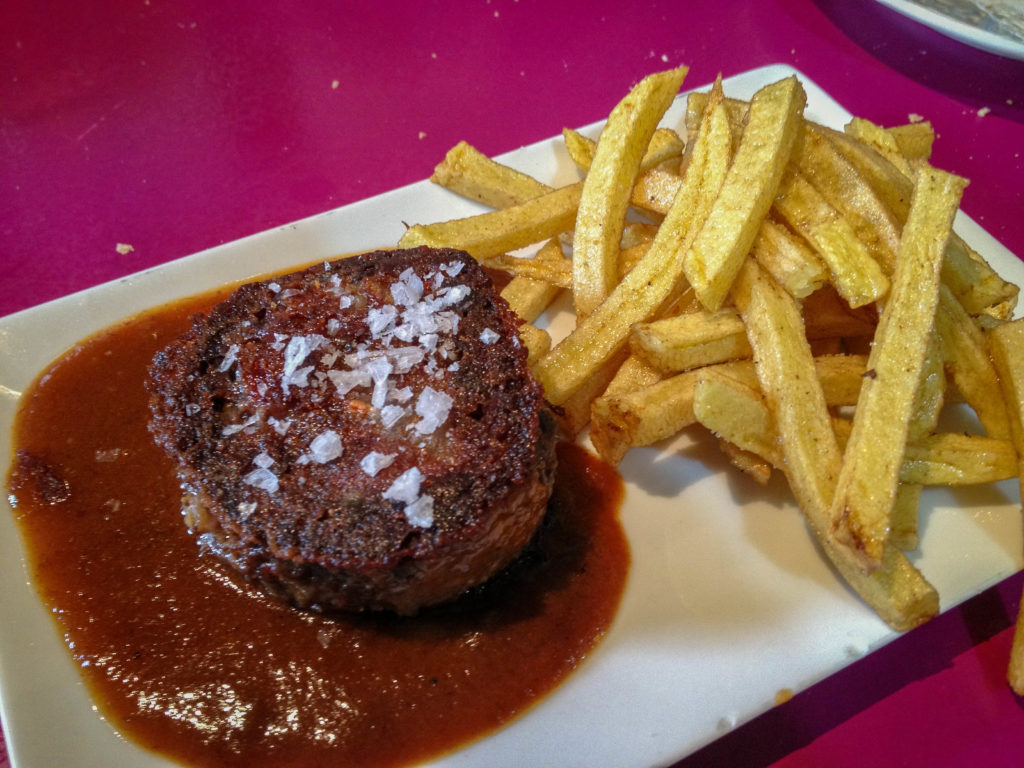
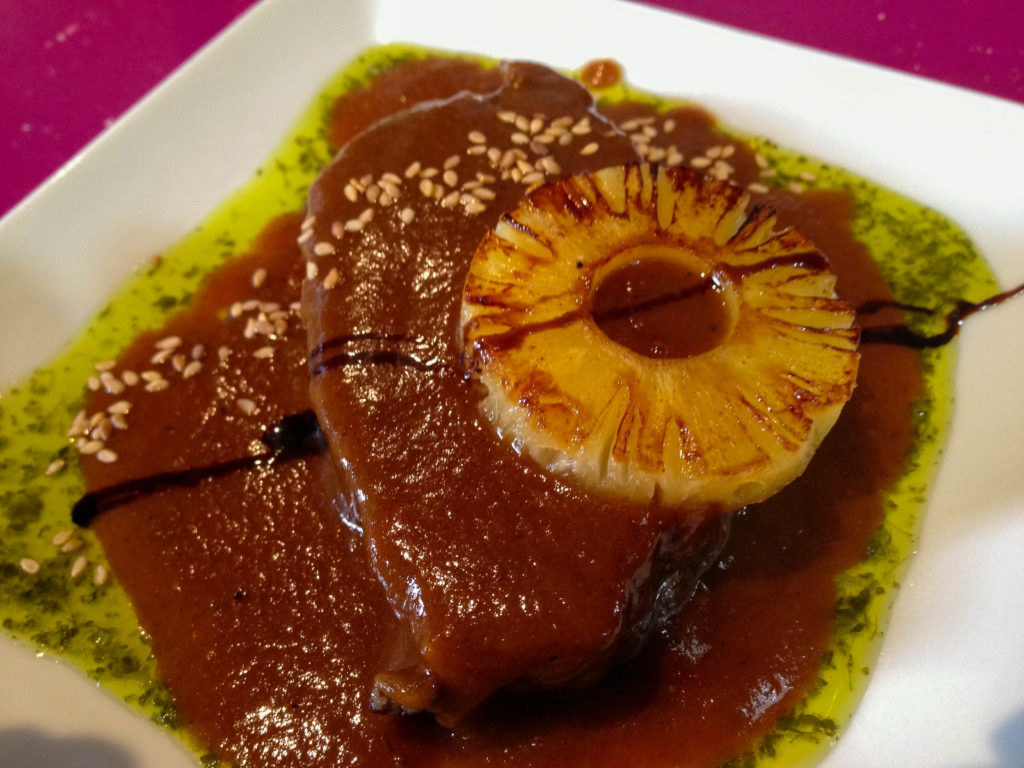
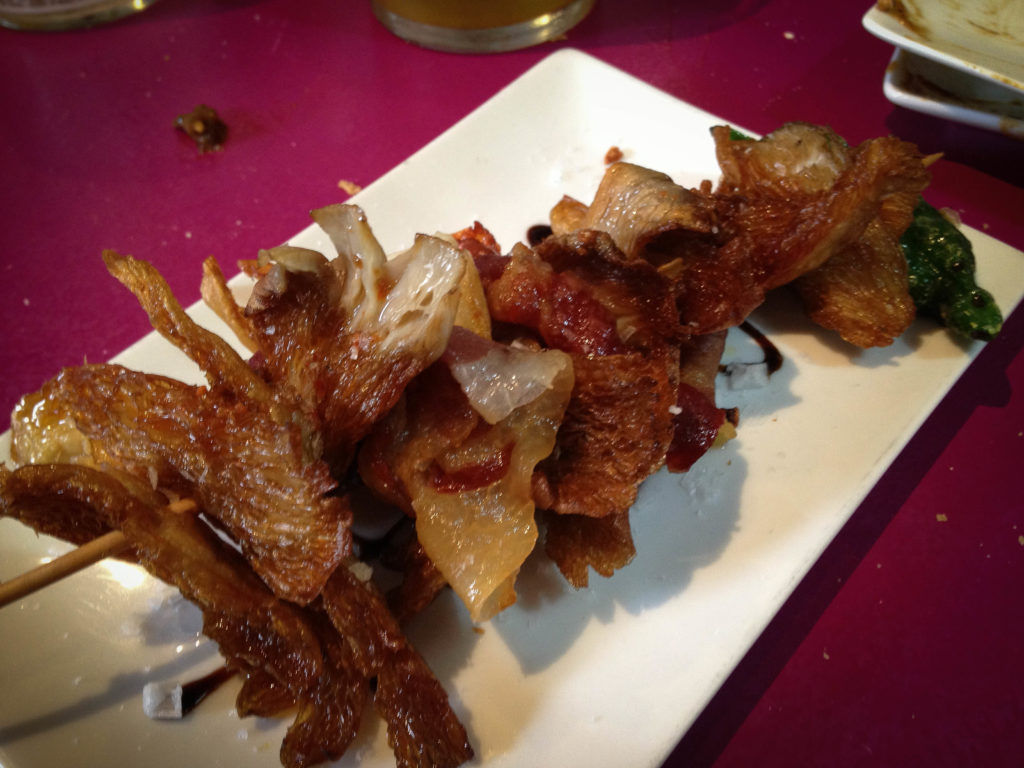
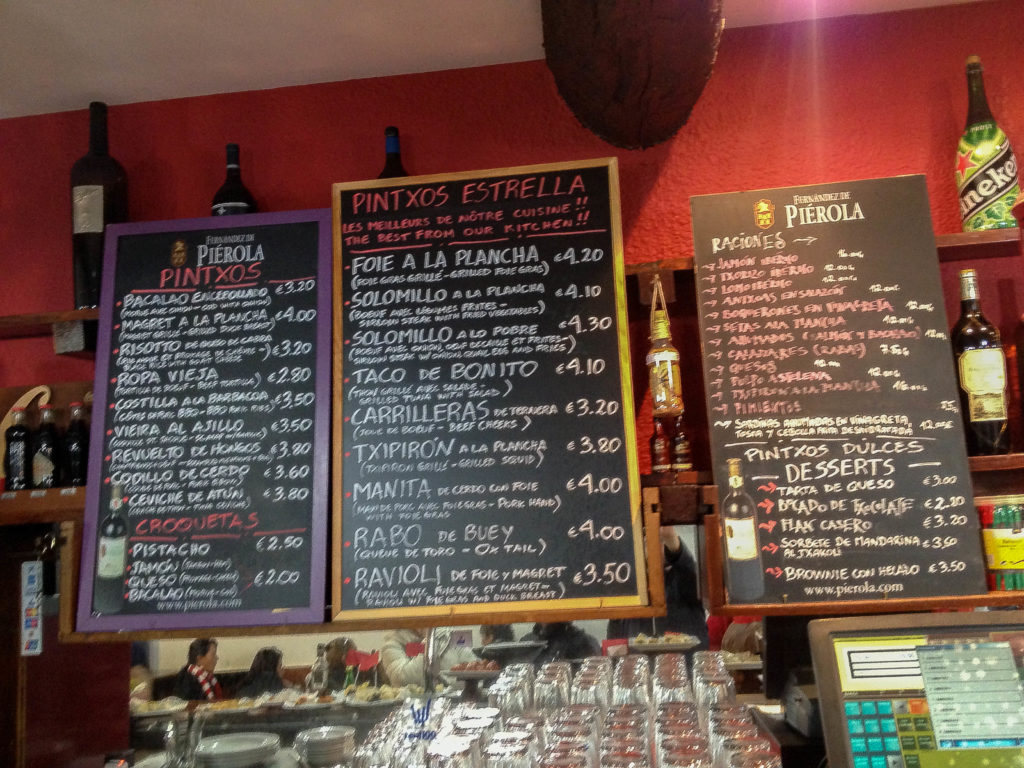
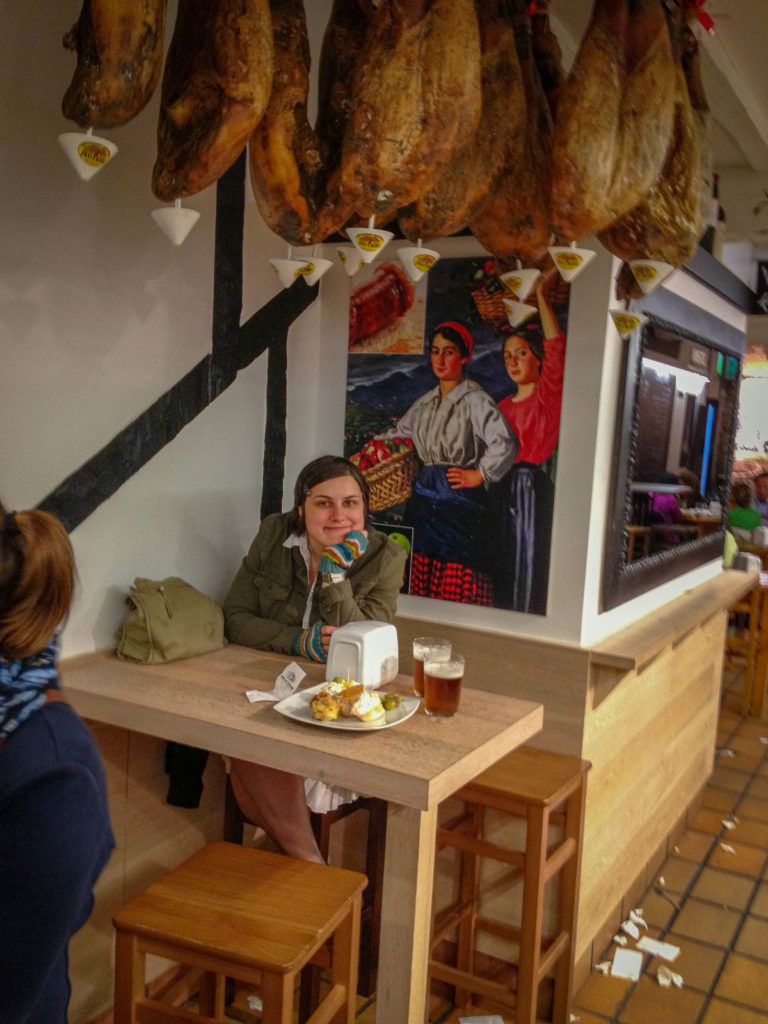
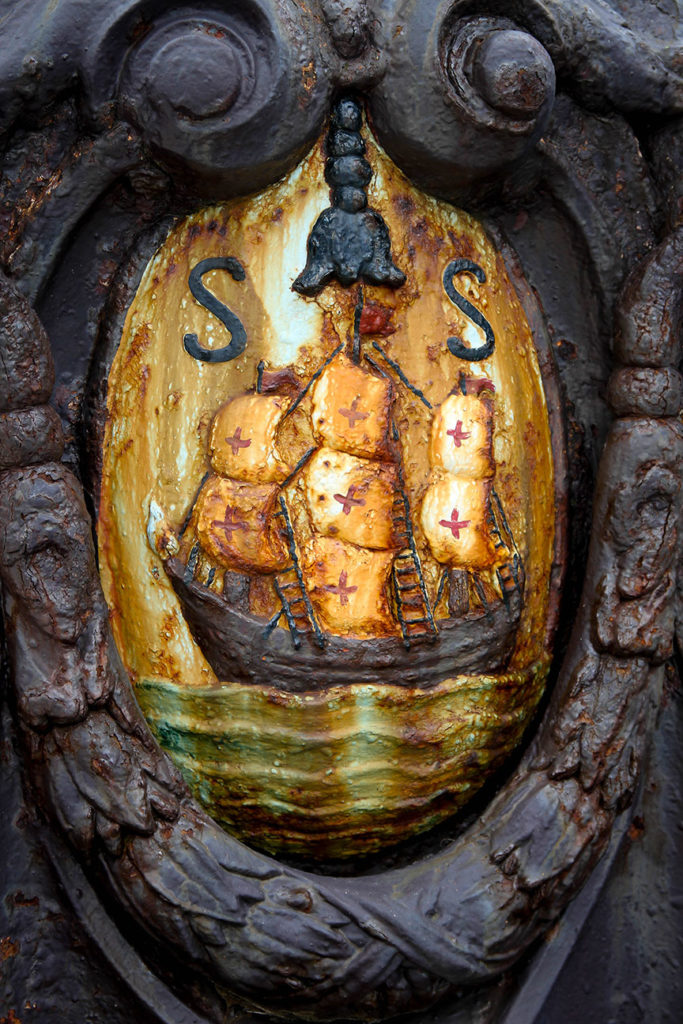
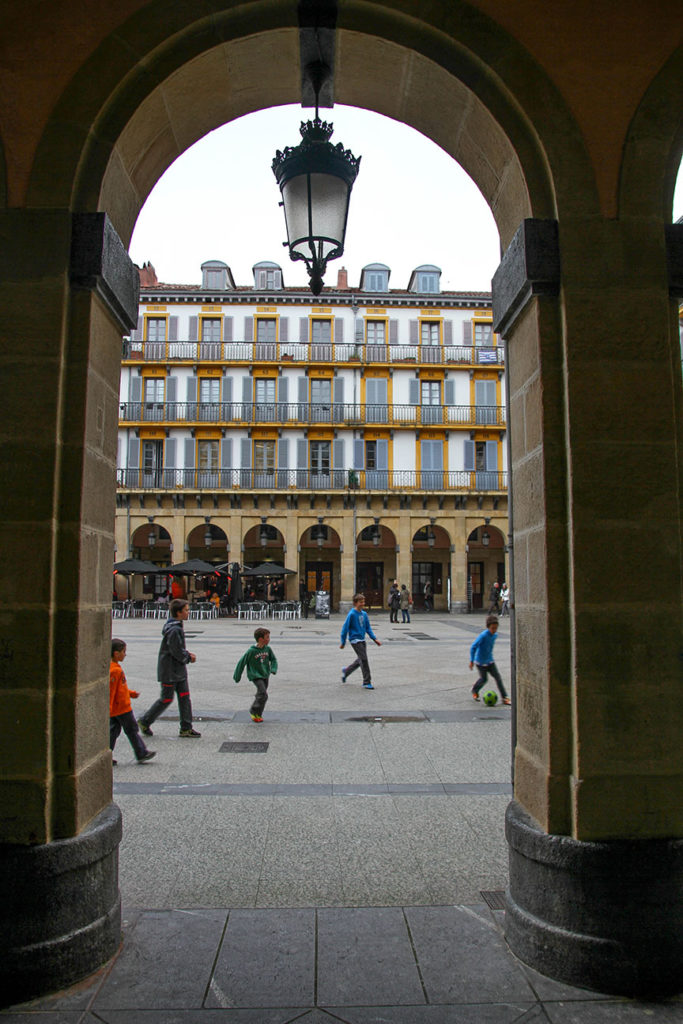
[…] Pintxos, bacalao (bacalhau), and jamón ibérico de bellota in San Sebastian […]